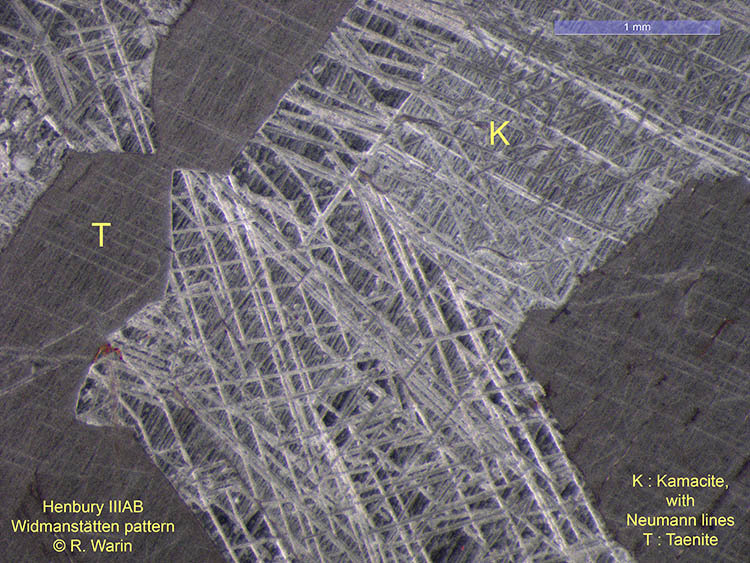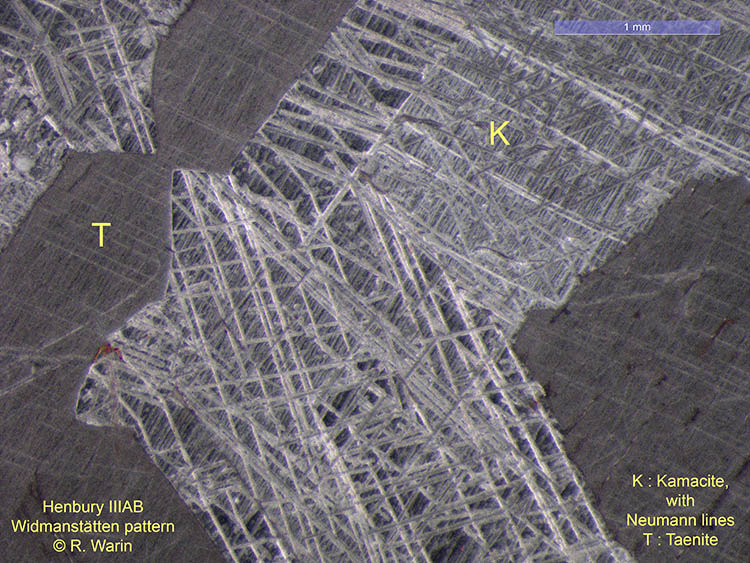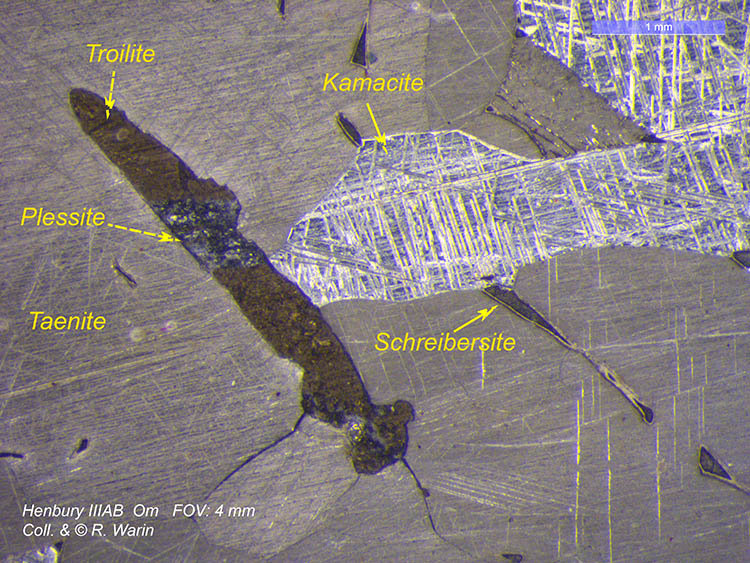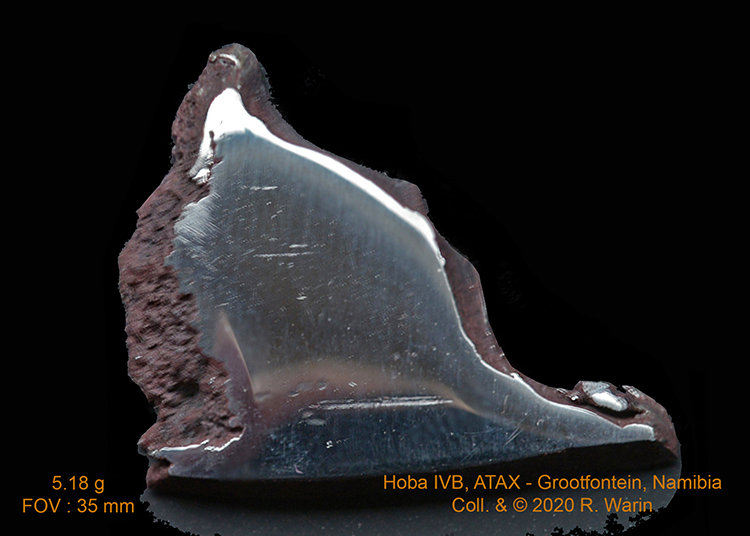| View previous topic :: View next topic |
| Author |
Message |
Roger Warin

Joined: 23 Jan 2013
Posts: 1176



|
 Posted: Aug 05, 2023 15:07 Post subject: New species accepted by the IMA? Posted: Aug 05, 2023 15:07 Post subject: New species accepted by the IMA? |
|
|
| alfredo wrote: | I would not expect any new mineral species to form a million centuries in the future from human aluminium or plastic.
Aluminium will probably mostly disappear, turning into various well known Al-oxyhydroxide species or Al-phosphates.
Plastic might perhaps survive if buried under anaerobic conditions. A million centuries in the future is the same amount of time as from the mid-Cretaceous to today, and other amorphous organic materials, like amber, have survived that long. Amber slowly polymerizes to a harder, more brittle, less soluble resin, but does not crystallize; plastics might age similarly. Or the plastic might very slowly disappear completely, turning into CO2 and CH4 by bacterial activity. It seems some bacteria are already evolving to decompose plastics. So plastic garbage may well be an unsightly mess for thousands of years, but after 100 million? ...it will probably be gone. No new mineral species.
Roger, I must somewhat disagree with your statement, "...the IMA takes care not to recognize these new and dubious species. They are not minerals but artificial chemical compounds resulting from various alterations." There have been several new species accepted by the IMA that would not exist without human intervention, including various modern minerals from weathered slags, mine fires, mine dump fires, etc. And even after announcing that they would not approve such minerals in future, they have still gone ahead and approved some more! And some recently approved minerals are just industrial waste products, like dellagiustaite. |
Hello Alfredo,
Yes you are right, but the IMA is not the gospel because this noble institution today regrets having recognized certain species, even mineral ones, resulting artificially from human action such as the degradation of galleries or slag mines.
In fact, there is competition between several notions, either the existence of a mineral species describing terrestrial geology, or mineral compounds characterized in other sciences. Indeed, scientists analyze meteorites, such as chondrites or irons: kamacite (low temperature phase) is discredited and is therefore not included in the Fleisher, while taenite (high temperature phase) is. Kamacite is the stable phase at low temperature, relatively low in Ni.
It could perhaps be emphasized that in principle the description of mineral species relates to the earth's crust as it was before the pharaohs. A form of perfectionist ecology.
On the other hand, what is the position of the IMA on transuranic minerals?
The IMA is intended for professional mineralogists only.
Nevertheless, the amateur who buys Fleischer's Glossary today will no longer find olivine, but will read that fayalite or forsterite (borderline species very often impure and rare) belong to the group of olivine. The 2008 edition was better from my amateur point of view.
Yet I have the impression that the Fleischer is essentially a book bought by amateurs.
In the end, what is olivine for the beginner? He will reassure himself by admiring his wife's peridot. Nomenclature is an art.
Petrochemistry is a complex science. I think it's easier to understand by studying meteorites, which are always very well described.
About the future? this one is always short on a planetary scale. Continental drift will swallow up all human nonsense, as it has done for more than 4 billion years. The plastic will become the diamond, a very abundant mineral whose modern extraction processes produce large specimens, still cut today in Antwerp.
|
|
| Back to top |
|
 |
Riccardo Modanesi
Joined: 07 Nov 2011
Posts: 618
Location: Milano


|
 Posted: Aug 06, 2023 03:26 Post subject: Re: New species accepted by the IMA? Posted: Aug 06, 2023 03:26 Post subject: Re: New species accepted by the IMA? |
|
|
Hi to everybody! Olivine, labradorite, oligoclase, hypersthene, bronzite....
The list Is so long! If you read the "Glossary of Obsolete Mineral Names" (I apologize I don't remember the proper title), the name "labradorite" Is reported as "Na rich anorthite", and so on for the non-end-member mineral names.
Greetings from Italy by Riccardo.
_________________
Hi! I'm a collector of minerals since 1973 and a gemmologist. On Summer I always visit mines and quarries all over Europe looking for minerals! Ok, there is time to tell you much much more! Greetings from Italy by Riccardo. |
|
| Back to top |
|
 |
alfredo
Site Admin

Joined: 30 Jan 2008
Posts: 979



|
 Posted: Aug 06, 2023 10:24 Post subject: Re: New species accepted by the IMA? Posted: Aug 06, 2023 10:24 Post subject: Re: New species accepted by the IMA? |
|
|
I think we are being rude to Tom by not sticking to his original topic here about potential future new minerals resulting from human garbage over geological time.
If we need an off-topic discussion about mineral variety names, group names and obsolete names, we should start a different thread about that. ;))
|
|
| Back to top |
|
 |
Jordi Fabre
Overall coordinator of the Forum

Joined: 07 Aug 2006
Posts: 4899
Location: Barcelona



|
 Posted: Aug 06, 2023 11:47 Post subject: Re: New species accepted by the IMA? Posted: Aug 06, 2023 11:47 Post subject: Re: New species accepted by the IMA? |
|
|
| alfredo wrote: | I think we are being rude to Tom by not sticking to his original topic here about potential future new minerals resulting from human garbage over geological time.
If we need an off-topic discussion about mineral variety names, group names and obsolete names, we should start a different thread about that. ;)) |
Done
|
|
| Back to top |
|
 |
SteveB
Joined: 12 Oct 2015
Posts: 235
Location: Canberra


|
 Posted: Aug 06, 2023 12:40 Post subject: Re: New species accepted by the IMA? Posted: Aug 06, 2023 12:40 Post subject: Re: New species accepted by the IMA? |
|
|
I'm not sure it's a relevant question though I think the face of the earth needs to be eradicated and everything returned to the molten core and allowed to follow physics and chemistry back to cooling and formation of landmasses and I don't think homo sapiens will be around to witness and investigate and if we are I'm sure the mineral definitions will have been rewritten beyond what we would recognize now and also highly refined and in the process all type specimens will be destroyed. It's more likely pollution will rule the air and waters if any and there may never be a natural process to clean up and allow life to arise again. But in the nearer time haven't we already seen the creation of new materials in the molten radioactive mass under Chernobyl where the core melted through the floor? Is it likely plastics will eventually return to react oil reserves? Or be eroded to grains to choke all ecosystems and kill all life down to microbial level? Not sure any of it matters. I don't think it will be witnessed by humans. I don't think living off world will happen and be stable enough to survive as a species. We are destructive and can't really cooperate only pretend to until one person gets jealous or greedy plus of course only the mega-rich will get to a space settlement where they will disagree and eventually fight etc. again irrelevant except for sci-fi it might be interesting what happens to the giant plastic dump in the Pacific Ocean over hundreds and thousands of years will it become a more solid island and will evolution favorably adapt species for it? I don't expect geology to take place though it will develop soils from organic matter decomposing so become fertile enough for birds to bring seeds and other critters to migrate on floating vegetation.
What about the new land off Japan being created from underwater volcanism will that contain interesting specimens already? And has the magma accumulated manmade garbage already to present some hybrid oddities? or have China and Korea rowed out to plant flags on it as well as missile launches.
|
|
| Back to top |
|
 |
Roger Warin

Joined: 23 Jan 2013
Posts: 1176



|
 Posted: Aug 07, 2023 02:58 Post subject: Re: New species accepted by the IMA? Posted: Aug 07, 2023 02:58 Post subject: Re: New species accepted by the IMA? |
|
|
Hello,
I thank Jordi for allowing us to talk about scientific subjects whose consistency is not sufficient to make it an official publication.
So as not to intertwine the themes, I choose space as virgin territory for any human action and I look at what the Glossary (2014 ed.) says.
Iron meteorites will serve as the main course.
This celestial iron results of course from nucleosynthesis limited to iron. Just like in chemistry, the Fe, Co, Ni triad is not due to chance. The sequence of probabilities is this:
The average composition of iron meteorites is:
Fe, 90.78 ± 0.26 percent; Ni, 8.59 ± 0.24 percent; Co, 0.631 ± 0.019 per cent.
Harrison Brown and Claire Patterson - The Journal of Geology - Vol. 55, No. 6 (Nov., 1947).
Iron flakes found in chondrites have approximately this composition.
So here is a mineral (Fe 0.9, Ni 0.1) which existed before the birth of the solidified Earth. This mineral is well determined crystallographically and bears the name of kamacite. He is, however, unknown to Fleischer. Mineralogy remains universal if conditions permit.
Moreover, the irons have another origin since they result from the splitting of larger and therefore differentiated asteroids.
Here the celestial metallurgy intervenes (not that of Man), so there was an influence of the temperature. A new mineral species appears: taenite, richer in Ni, exceeding 30% Ni.
Strangely Fleischer knew this and published this Taenite name.
However, I understand that the IMA has accepted that taenite is defined as a mineral since it has been found on Earth: Terrestrial mineral: Gorge River, South Island, New Zealand Link.
The phase diagrams show us that taenite is the high temperature phase and kamacite is the low temperature one.
Kamacite and taenite have the same cubic symmetry and space group Fm3m but differ in extended Bravais lattices.
Kamacite: Empirical formula: Fe0.9 Ni0.1 & Simplified formula: (α-Fe,Ni).
Taenite: Fe0.8 Ni0.2. Simplified formula: (γ-Fe,Ni).
Celestial metallurgy is sublime. The cooling of the iron core varies from 1 to 10 degrees C per million years!
Thanks to this remarkably long time scale, the diffusion of atoms can occur and a new equilibrium transforms the homogeneous taenite at high temperature into a mixture of Ni-poor kamacite and very Ni-rich taenite.
In fact, these irons are solid solutions which change with temperature.
The paths traveled by the atoms are not long, we simply go from the denser Face Centered Cube to the less dense Body Centered Cube.
There are fewer atoms per unit cell in BBC structure (α-Fe) than in FCC cell structure (γ -Fe).
I was able to underline in a recent article (in French for amateurs!) that it was an epitaxy, which I have never read so defined elsewhere.
Only irons called octahedrites show this differentiation (figures from Widmanstätten).
Let us add a nuance, taenite is only a cold metastable phase, because around 500-600°C the diffusion phenomena no longer occur.
This was the case for the largest meteorite in the world (60 tonnes), Hoba (Grootfontein, Namibia). With 18% Nickel, it is an ataxite that does not exhibit Widmanstätten patterns because for such a value of Ni, the diffusion was stopped around 600°C, as shown in the phase diagram.
(I can possibly send the pdf of this article in French-18 pages).
|
|
| Back to top |
|
 |
Jordi Fabre
Overall coordinator of the Forum

Joined: 07 Aug 2006
Posts: 4899
Location: Barcelona



|
 Posted: Aug 07, 2023 03:18 Post subject: Re: New species accepted by the IMA? Posted: Aug 07, 2023 03:18 Post subject: Re: New species accepted by the IMA? |
|
|
| Roger Warin wrote: | I thank Jordi for allowing us to talk about scientific subjects...
|
More than thankful Roger!
|
|
| Back to top |
|
 |
alfredo
Site Admin

Joined: 30 Jan 2008
Posts: 979



|
 Posted: Aug 07, 2023 22:03 Post subject: Re: New species accepted by the IMA? Posted: Aug 07, 2023 22:03 Post subject: Re: New species accepted by the IMA? |
|
|
Roger, I'd like to clear up some misunderstandings: Firstly, Fleischer's glossary does not pretend to be anything more than a list of approved species. As such it is very useful for the "systematic species collectors". If you need to consult the names of varieties (like labradorite, kamacite, emerald, etc) or groups (like olivine), then you must use a different book, or Mindat. It is not Fleischer's fault that these are not species names.
Secondly, regarding your comment: "... the IMA has accepted that taenite is defined as a mineral since it has been found on Earth: Terrestrial mineral: Gorge River, South Island, New Zealand". This is wrong - There is no mineralogical rule that a mineral species must be found terrestrially in order to be approved. The IMA has approved many species from meteorites and from the Moon. Some of these have later been found also on Earth and some not, but that has nothing to do with their mineralogical species status. (My favorite is the beautiful mineral roedderite, first found in a meteorite, then 10 years later in the high-temperature altered lavas of Iwojima: https://www.mindat.org/photo-783416.html - but it was already an approved species 10 years before being found on Earth.)
Kamacite is a varietal name and not a species name because it has the same structure as native iron and the same dominant element. When it was formed in the Solar System, or when it was named, have no connection to its species status (or rather lack of species status). For defining a species, only the structure and chemistry count; all other factors are interesting but not decisive, and kamacite does not qualify as a species by structural criteria and modern definitions. That does NOT mean the name will disappear, nor that the IMA wants to eliminate the name. Some collectors seem to think that if a name is not in Fleischer then we are not allowed to write it on a label, which is completely wrong. (That would be like telling someone they are not permitted to call their dog a dachshund or a poodle; they must call it a "Canis lupus familiaris" - which of course is nonsense.) Meteoritic descriptions will certainly continue to use the name kamacite. Many variety names are useful to scientists and collectors or jewelers (like kamacite, electrum, labradorite, andesine, ruby, emerald, amethyst); everyone will continue to use these names... but they are not "species", so there is no reason to include them in Fleischer's species list.
|
|
| Back to top |
|
 |
Roger Warin

Joined: 23 Jan 2013
Posts: 1176



|
 Posted: Aug 08, 2023 09:09 Post subject: Re: New species accepted by the IMA? Posted: Aug 08, 2023 09:09 Post subject: Re: New species accepted by the IMA? |
|
|
Hello enthusiasts,
and thank you Alfredo for these precise details, which I appreciate to the highest degree. You are completely right. But as you know, I ran an amateur club for over 50 years. I like mineralogy and petrology (meteorites) for amateurs because I am one of them.
I am not criticizing the Glossary, a marvelous bible for the amateur.
Only, in recent years, a wind of perfectionism has blown, fanned by noble sentiments. I don't like this storm.
The Glossary is a commercial enterprise that must respect its most numerous buyers, at least by adding an addendum merging the present with the past, without returning to medieval appellations.
You tickled me with the iron, I will try to justify myself.
I place "iron" like a group leader, on the same footing as olivine, many great nuances must be made.
It seems to me that the nomenclature belongs to the crystallographers.
It was already in 1958 when I admired the Brussels Atomium that I learned of this nuance, because it carried an explanatory sign. The Atomium is the representation of the unit cell of α-iron: it is the name of the structural mineral species (BBC), on the poster.
As far as meteoritic irons are concerned, two different species of iron are present: α-Fe and γ-Fe. These two phases (species) can be demonstrated by artificial acid corrosion, when they are well developed. Metallurgists call α-Fe: ferrite.
Octahedrites are concerned by this type of separation of the 2 phases, appearing thanks to a very slow cooling.
But Hoba remains a perfect mirror, sometimes with a small inclusion. This meteorite is an ataxite: it is essentially composed of taenite (FCC) frozen with some exsolutions of acicular kamacite, plessite (a fine-grained mixed phase) and some sulphides and phosphides (troilite, schreibersite).
But I believe throwing a sword in the water.
I did not know the roederrite. I think it is as noble a species as those produced in pegmatites by hydrothermal action.
I assume it appears in basic lavas.
| Description: |
Atomium
Brussel
165 billion unit cell |
|
| Viewed: |
11565 Time(s) |

|
| Mineral: | "octaedrite" |
| Description: |
|
| Viewed: |
11587 Time(s) |

|
| Mineral: | "octaedrite" |
| Description: |
Henbury
FOV : 4.5 mm
good shot i think |
|
| Viewed: |
11562 Time(s) |

|
| Mineral: | Schreibersite |
| Description: |
|
| Viewed: |
11569 Time(s) |

|
| Mineral: | Taenite |
| Description: |
Hoba - Grootfontein
FOV: 35 mm |
|
| Viewed: |
11564 Time(s) |

|
|
|
| Back to top |
|
 |
alfredo
Site Admin

Joined: 30 Jan 2008
Posts: 979



|
 Posted: Aug 08, 2023 10:26 Post subject: Re: New species accepted by the IMA? Posted: Aug 08, 2023 10:26 Post subject: Re: New species accepted by the IMA? |
|
|
You brought back an old happy memory, Roger: My father drove us by car from England to Belgium when I was 10 years old, to see the Atomium.
Thanks for the beautiful meteorite photos. Do you etch the slices yourself?
|
|
| Back to top |
|
 |
Roger Warin

Joined: 23 Jan 2013
Posts: 1176



|
 Posted: Aug 08, 2023 21:55 Post subject: Re: New species accepted by the IMA? Posted: Aug 08, 2023 21:55 Post subject: Re: New species accepted by the IMA? |
|
|
No Alfredo, since the end of the 90s I no longer have access to a lab (but I could at ULiege). This beautiful Henbury comes from the collection of David New that I knew in the 90s.
I own between 150 and 200 TS (thin sections 30 microns thick, or about 1 mm³ of rock) from his meteorite collection (in addition to many more). My message is this: meteorite petrochemistry is much simpler than terrestrial geochemistry. The other TS come from Ensisheim, the most folkloric of the specialized shows.
But I regret the lack of public interest in this aspect of science which seems to me fundamental in the examination of chondrites, rather than collecting black stones and their labels.
This passion opened my eyes to the past of our Earth and the nebula, thanks to the very primitive carbonaceous meteorites, probably debris from comet nuclei. These meteorites are very eloquent on the origin of the first minerals to appear in space. They contain up to 5 vol% carbonates: dolomite, breunnerite, calcite, siderite) do occur in CI’s Ivuna and Orgueil. Comets are the black boxes of space chemistry.
Is there another meteor lover on this forum?
|
|
| Back to top |
|
 |
|



